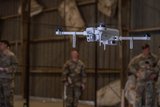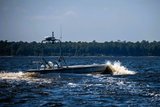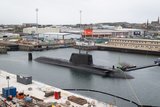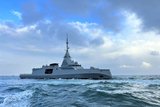How the UK Royal Navy is powering up its hybrid fleet to combat new threats
The Royal Navy carried out a USV operational demonstration in October with five uncrewed, remotely operated boats. (Photo: Crown Copyright/LPhot Daniel Bladen)
The UK Royal Navy (RN) has visibly ramped up its efforts to enhance its uncrewed capabilities at sea in recent months, demonstrating its ambitions to develop a hybrid fleet to keep the country’s maritime defences on a global footing, despite the service’s relatively small size.
While the RN is already considered a technologically advanced force internationally, its current focus on getting uncrewed underwater vessels (UUVs) and uncrewed surface vessels (USV) into the field as quickly as possible is underpinning its ability to both tackle emerging threats and to work more closely with its allies, particularly within NATO, who are advancing their own uncrewed
Already have an account? Log in
Want to keep reading this article?
More from Naval Warfare
-
![What capabilities has the US deployed in the Caribbean and South America to engage “drug boats”?]()
What capabilities has the US deployed in the Caribbean and South America to engage “drug boats”?
The US arsenal includes amphibious assault and littoral combat ships, cutters, destroyers, landing platform docks, a nuclear-powered fast attack submarine, drones, ISR aircraft, helicopters and fighters.
-
![HMS Agamemnon: details of the dive and what the Astute-class signifies for the UK Royal Navy]()
HMS Agamemnon: details of the dive and what the Astute-class signifies for the UK Royal Navy
As HMS Agamemnon moves closer towards joining the UK’s in-service submarine fleet, how does the sixth Astute-class fit into the Royal Navy’s defence strategy?
-
![French Navy frigates to align with Hellenic Navy after Aster missile enhancement]()
French Navy frigates to align with Hellenic Navy after Aster missile enhancement
The FDI frigates will have an enhanced warfare capability that matches the configuration of ships ordered by Greece.
-
![Khabarovsk submarine launch reflects Russia’s nuclear modernisation progress]()
Khabarovsk submarine launch reflects Russia’s nuclear modernisation progress
The nuclear-powered vessel, which could carry the Poseidon autonomous torpedo – dubbed the “doomsday missile” – marks another step forward in Russia’s maritime defence push.























